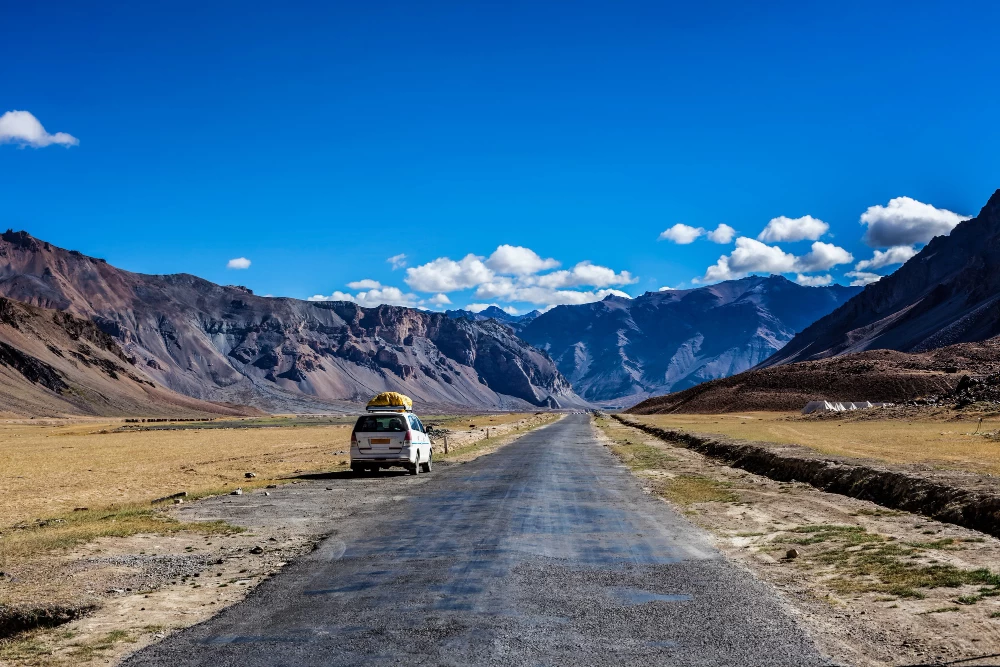
When most travelers picture Ladakh, they think of the stark beauty of Pangong Lake, the winding roads of Khardung La, or the bustling market streets of Leh. But Ladakh is far more than just its postcard spots. Beyond the tourist trail lies a Ladakh that is quieter, richer in tradition, and deeply rooted in timeless ways of life — where each village holds a story, every silence has depth, and landscapes breathe ancient rhythms.
If you're planning to explore this untouched and authentic side of the region, Ladakh tour packages offer the perfect way to experience its culture, monasteries, high-altitude deserts, charming villages, and breathtaking Himalayan scenery with ease and comfort.
If you’re willing to step off the beaten path, here are four hidden corners of Ladakh that offer an unforgettable connection to its land, people, and spirit.
Holiday Packages in Ladakh
View All
1. Turtuk: The Balti Jewel at the Edge of India
Perched on the banks of the Shyok River, Turtuk is one of India’s last villages before the Pakistan border. Once part of Baltistan (now in Pakistan), it only became accessible to tourists in 2010. Turtuk surprises you with its sudden change in landscape — lush apricot orchards, wooden homes with carved balconies, and a vibrant Balti culture that feels entirely different from central Ladakh.
Here, people speak Balti, follow a Sufi Islamic tradition, and proudly share stories of their divided families and unique heritage. Walking through Turtuk’s narrow lanes is like stepping into another time — with every smile, every cup of salty tea, and every apricot offered by a stranger making you feel deeply welcome.
Must-do: Visit the small heritage museum curated by a local teacher, taste local apricot-based sweets, and take a walk to the ancient Brokpa fort ruins nearby.
2. Dah & Hanu: In the Land of the Brokpas
Tucked away along the lower Indus Valley near Khaltse, the twin villages of Dah and Hanu are home to the Brokpa people — a small, distinct ethnic group believed to be descendants of the ancient Indo-Aryans. The Brokpas are known for their striking attire, floral headgear, and centuries-old customs that differ from the rest of Ladakh.
These villages aren’t just beautiful — they challenge your ideas of cultural continuity and identity. Yet, tourism here must be approached with sensitivity. The Brokpas are not a curiosity but a living community, and visitors must engage respectfully.
Must-do: Attend a local festival if your timing matches, or simply join a family for a meal and hear stories that don't appear in guidebooks.
3. Hanle: Stargazing in Silence
High on the Changthang plateau, near the Tibetan border, lies Hanle — a remote village that feels like the end of the world. But at this edge, you’ll find one of the highest astronomical observatories in the world, sitting quietly beneath an endless sky. Hanle is a dream for stargazers and seekers of true silence.
This is also home to nomadic Changpa communities who herd pashmina goats across arid grasslands. Life is minimalist here, shaped by the wind and the sky. There is no phone network, limited electricity, and no shops — just raw beauty and soul-healing stillness.
Must-do: Spend a night in a local homestay, visit the 17th-century Hanle Monastery, and don’t miss the dazzling Milky Way on a moonless night.
4. Zanskar Valley: Where Time Moves Differently
Zanskar is a name that evokes both awe and remoteness. A high-altitude valley surrounded by formidable mountains, it remains one of the most isolated parts of Ladakh — accessible by road only during the summer months. The journey is long, but the rewards are immense.
Villages like Padum, Karsha, and Lingshed hold treasures of Tibetan Buddhism, with ancient monasteries perched on cliffs and rituals that remain untouched by time. Life here is hard, but the people of Zanskar have a gentleness and resilience that stays with you long after you leave.
Must-do: Visit Karsha Monastery at sunrise, Visit Phuktal Monastery – a small trek of approx. 2 hrs, walk along the Zanskar River, and experience the warmth of a home-cooked Zanskari meal in a family kitchen.
Trekking and Hiking Packages in Ladakh
View All
Traveling beyond Leh is not just about reaching remote places — it’s about changing the way we travel. In these hidden villages, you'll find no Wi-Fi, no fancy cafés, and no crowds. But you will find stories — shared by shepherds, monks, and grandmothers — that echo through wind-swept valleys and apricot-laden orchards.
If you’re ready to listen, Ladakh will whisper its deepest truths in places where the roads end.